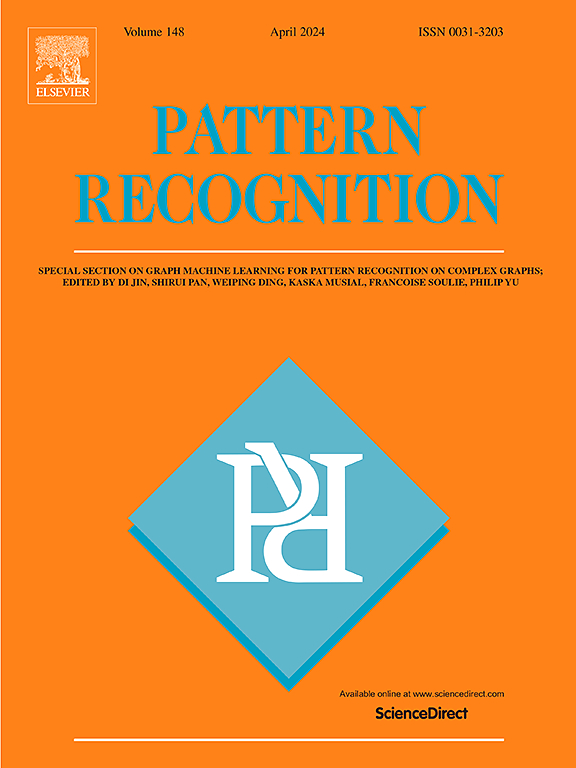基于张张化自适应多尺度分区融合的一步延迟融合多核聚类
IF 7.6
1区 计算机科学
Q1 COMPUTER SCIENCE, ARTIFICIAL INTELLIGENCE
引用次数: 0
摘要
近年来,多核聚类在数据分析领域得到了广泛的应用。延迟融合多核聚类算法(LFMKC)以其计算复杂度低的特点,在现有的多核聚类算法中脱颖而出。然而,LFMKC仍然面临着一些问题。首先,LFMKC仅使用单尺度分区获得聚类结果,未能充分了解核矩阵中的信息。其次,LFMKC不能利用高阶相关性,因为基本分区是固定的。此外,LFMKC需要一个额外的k-means步骤来产生结果。为了克服这些局限性,我们设计了一种将多尺度融合、高阶张量信息和光谱旋转(SR)融合到一个统一框架中的新方法,即一步后期融合多核聚类(OLMTMF)。更精确地说,我们首先设计了一种自适应算法来整合多尺度划分而不是单一划分,充分挖掘不同核矩阵中的信息。接下来,OLMTMF在张量核范数(TNN)约束下,构建具有不同融合分区的张量,以发现这些融合分区之间的高阶相关性。最后,OLMTMF利用SR直接获得聚类结果,进一步提高了聚类性能。我们还开发了一种具有理论收敛保证的替代方法来优化OLMTMF的目标函数。大量实验表明,OLMTMF在不同的数据集上取得了优异的聚类性能,且计算复杂度较低。源代码可以从https://github.com/luxinrui018/OLMTMF下载。本文章由计算机程序翻译,如有差异,请以英文原文为准。
One-step late fusion multiple kernel clustering via tensorized adaptive multi-scale partition fusion
Recent years, multiple kernel clustering (MKC) has extensive applications in data analysis field. Due to its characteristic of low computational complexity, Late Fusion Multiple Kernel Clustering (LFMKC) stands out among existing MKC algorithm methods. However, LFMKC is still confronted with some problems. Firstly, LFMKC only uses single-scale partition to obtain the clustering results, failing to learn about the information in the kernel matrices thoroughly. Secondly, LFMKC cannot utilize the higher-order correlations since the base partitions are fixed. Besides, LFMKC need an extra k-means step to yield the result. To overcome these limitations, we design a new method named One-step Late fusion Multiple kernel clustering via Tensorized adaptive Multi-scale partition Fusion (OLMTMF), which integrates multi-scale fusion, high-order tensor information and spectral rotation (SR) into a unified framework. To be more precise, we first design an adaptive algorithm to integrate multi-scale partition instead of single partition, fully exploring the information in different kernel matrices. Next, OLMTMF builds a tensor with different fused partitions, constrained by Tensor Nuclear Norm (TNN), to discover the higher-order correlations among these fused partitions. Finally, OLMTMF utilizes SR to directly obtain clustering results, further improving the clustering performance. We also develop an alternative procedure with theoretical convergence guarantee to optimize the objective function of OLMTMF. Extensive experiments indicate that OLMTMF achieves excellent clustering performance on different datasets with low computational complexity. The source code can be downloaded from: https://github.com/luxinrui018/OLMTMF .
求助全文
通过发布文献求助,成功后即可免费获取论文全文。
去求助
来源期刊

Pattern Recognition
工程技术-工程:电子与电气
CiteScore
14.40
自引率
16.20%
发文量
683
审稿时长
5.6 months
期刊介绍:
The field of Pattern Recognition is both mature and rapidly evolving, playing a crucial role in various related fields such as computer vision, image processing, text analysis, and neural networks. It closely intersects with machine learning and is being applied in emerging areas like biometrics, bioinformatics, multimedia data analysis, and data science. The journal Pattern Recognition, established half a century ago during the early days of computer science, has since grown significantly in scope and influence.
 求助内容:
求助内容: 应助结果提醒方式:
应助结果提醒方式:


